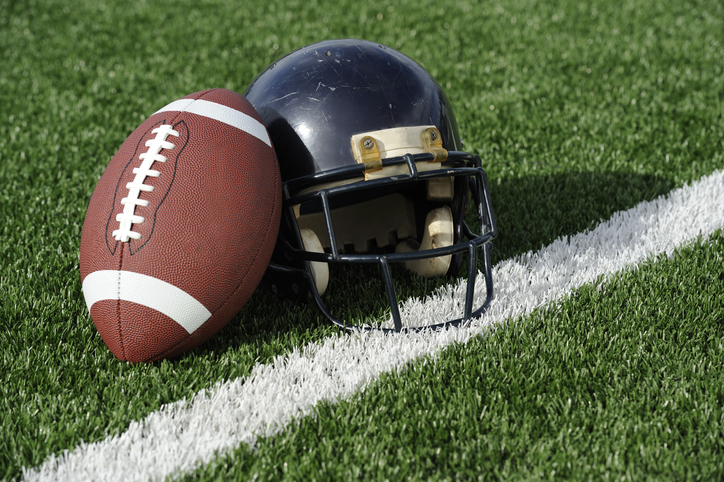The Technology of Football Helmets

We continue our discussion of polymers in sports equipment by looking at football helmets. The well-publicized dangers of head injuries have put helmet design back in the forefront of sports equipment manufacturers. Modern day football helmets bear little resemblance to the original leather helmets first introduced in the early 1900s. These leather helmets had no face guards, little padding, and were primarily used to protect the players’ ears. In the late 1930s, plastic helmets were introduced, which incorporated the chin strap for the first time. In the 1940s, the first face guards made their appearance, although they were much more minimal than the modern face guards seen today.
Material Composition of a Football Helmet
The mechanical requirements of football helmets requires a material that is lightweight, tough, and exhibits good impact strength. Most modern helmets use polycarbonate for the outer shell. Polycarbonate is a high impact resistant polymer that can be injection molded, painted, and can maintain its properties when subjected to cold temperatures, an important feature for teams playing in the northern states. Less expensive helmets sometimes use acrylonitrile-butadiene-styrene (ABS) copolymer, another impact resistant material.
The padding in helmets, critical for absorbing and dampening impact loads, is often made from nitrile-based foam, and reinforced with polyethylene foam. The pore size and chemistry of the foam will affect its viscoelastic response (modulus vs. frequency response), which is the most important behavior for a helmet application, so proper testing of potential materials is important, often requiring dynamic mechanical analysis.
Minimizing Impact Load
In addition to material selection, helmet design plays an important role in its ability to minimize direction transmission of impact load from the helmet to the athlete’s brain. Some helmet designs contain a hexagonal-shaped cutout near the forehead of the helmet. This cutout is a cantilever system which is intended to absorb some of the impact force.
Researchers are also considering integrated helmet-shoulder pad designs to further dissipate impact loads from the head down into the body. Accelerometers built into the helmets provide side-line monitoring of impact loads in players.